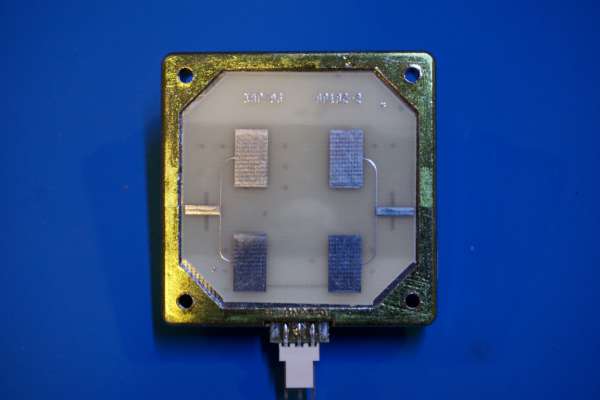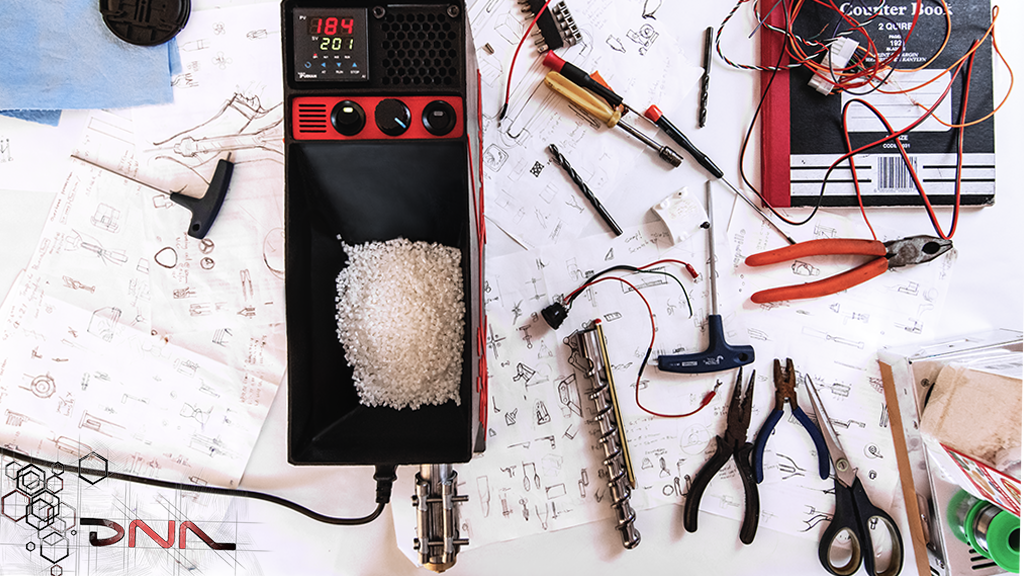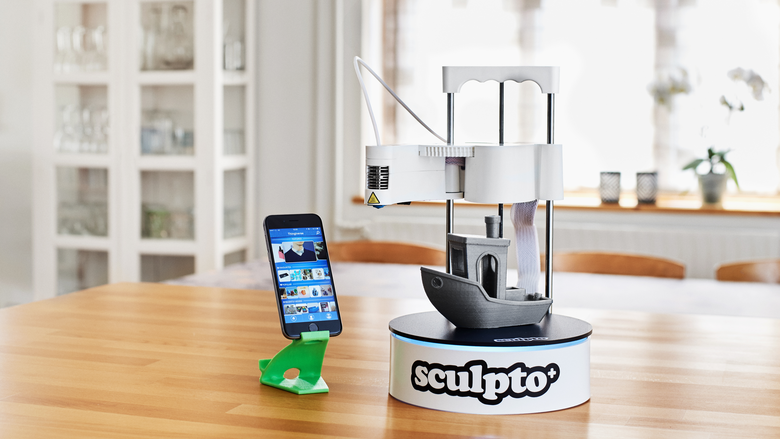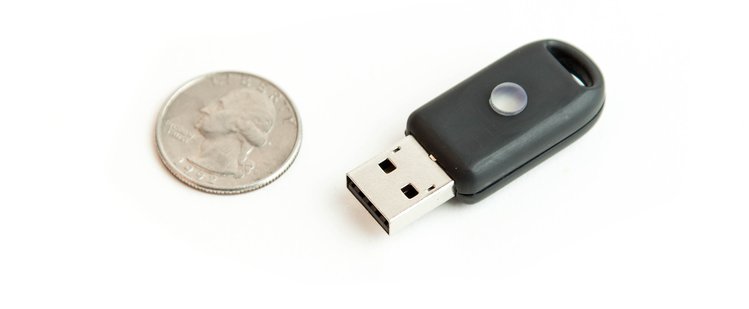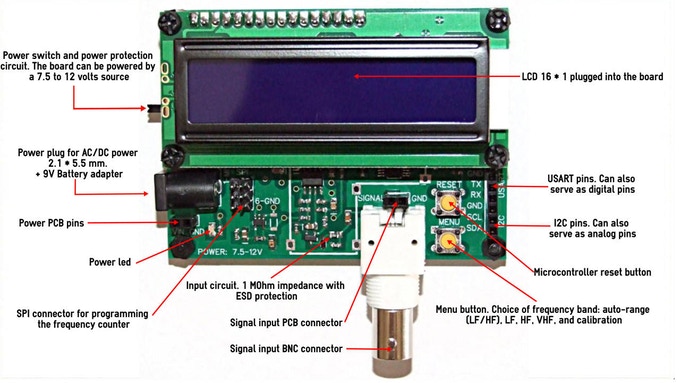How do antennas work? – [Link]
Teardown and experiments with a Doppler microwave transceiver
Kerry Wong did a teardown of Microsemi’s C900502 X-band planar transceiver:
I got a couple of Microsemi’s C900502 10.525 GHz X-band Doppler radar motion sensors a while ago. This batch was made in UK and had “UK patents 2243495 and/or 2253108 apply” printed on the case. I have seen a teardown of an HB100 Doppler radar module before and was wondering if I this one is any different inside.
Teardown and experiments with a Doppler microwave transceiver – [Link]
Turn Your iPad Into A Second Screen with Luna
It is possible now to turn your iPad into a second display using Luna Display! Luna Display is a hardware solution that extends your Mac desktop to your iPad, creating a wireless second monitor maintaining high resolution.

In fact, Luna is one of Astro HQ products, a startup working on delivering tools for designers and animation creators. It is originally founded by two ex-Apple engineers, a reason to understand the loyalty for Apple products!
With no complicated settings, you can set up Luna in seconds using your already available Wi-Fi. This feature is Powered by Astro HQ LIQUID technology. Anyway if Wi-Fi is not available, USB can be the alternative.
LIQUID technology provides:
- Uncompromised image quality
- Lightning fast speeds
- Lag-free performance at 60 frames per second
- GPU acceleration, so your Mac stays fast and optimized
- Hand optimized ARM assembly to maximize battery life
- Velocity Control, which analyzes network conditions dozens of times per second
System Requirements
Works with any modern Mac – Luna requires a Mac running macOS 10.10, Yosemite (or later). Recommended configurations: MacBook Air (2012 and later), MacBook Pro (2012 and later), Mac mini (2012 and later), iMac (2012 and later), Mac Pro (Late 2013).
Works with any modern iPad – Luna requires an iPad running iOS 9.1 (or later): iPad 2 (or later), any iPad Mini and any iPad Pro.

“Luna extends both Astropad Standard and Astropad Studio to provide the ultimate drawing experience with the best second screen solution for iPad. If you are a creative professional, Luna has been designed with you in mind.”

To know more about Luna, you can check the Kickstarter campaign they launched earlier.
Fortunately, the 1,450% funded campaign is still running and still has 39 days to go. You can pre-order your Luna Display gadget for 65$, or the Artist bundle for $99, including 1 Luna Display and 1 year Astropad Studio.
For more information and details, you can check the official website of Astropad and Astro HQ. Also, take a look at the campaign video here.
Coulomb Transistor — A New Concept Where Metal Nanoparticles Are Used In Place Of Semiconductor
A research group at the University of Hamburg has created a unique coulomb transistor that operates on the principle of the voltage control of the electron band gap in metallic quantum-dot nanoparticles. This Single-electron transistor represents an approach to develop less power-consuming microelectronic devices. It will be possible if industry-compatible fabrication and room temperature operation are achieved.
The concept is based on building stripes of small, colloidal, metal nanoparticles on a back-gate device architecture. Being very tiny, the metallic nanoparticles exhibit semiconductor properties that can be controlled by voltage. The body of this transistor can be operated as a second gate. It results in well-defined and controllable transistor characteristics.

This newly invented Coulomb transistor has three main advantages. The advantages are: on/off ratios above 90%, very reliable and sinusoidal Coulomb oscillations, and room temperature operation. The concept allows for tuning of the device properties such as Coulomb energy gap and threshold voltage, as well as the period, position, and strength of the oscillations.
Though the single-electron transistor (SET) is quite similar to a common field-effect transistor (FET), it does not rely on the semiconductor band gap but instead on the Coulomb energy gap. Transfer characteristics of the SET show periodic on and off states known as Coulomb oscillations. Researchers hope that might render new applications possible in the future.
When a bias voltage is applied to the nanoparticle channel, it becomes clear that conduction in this system is not purely metallic but is controlled by tunnel barriers between individual particles. The transport of charged particles is hindered due to very high potential barrier which depends on the charging energy. Tuning the voltage of an additional gate results in a field effect that continuously shifts the energy levels of the particles and allows for tunneling to occur. This additional gate electrode is separated from the channel by a dielectric layer.
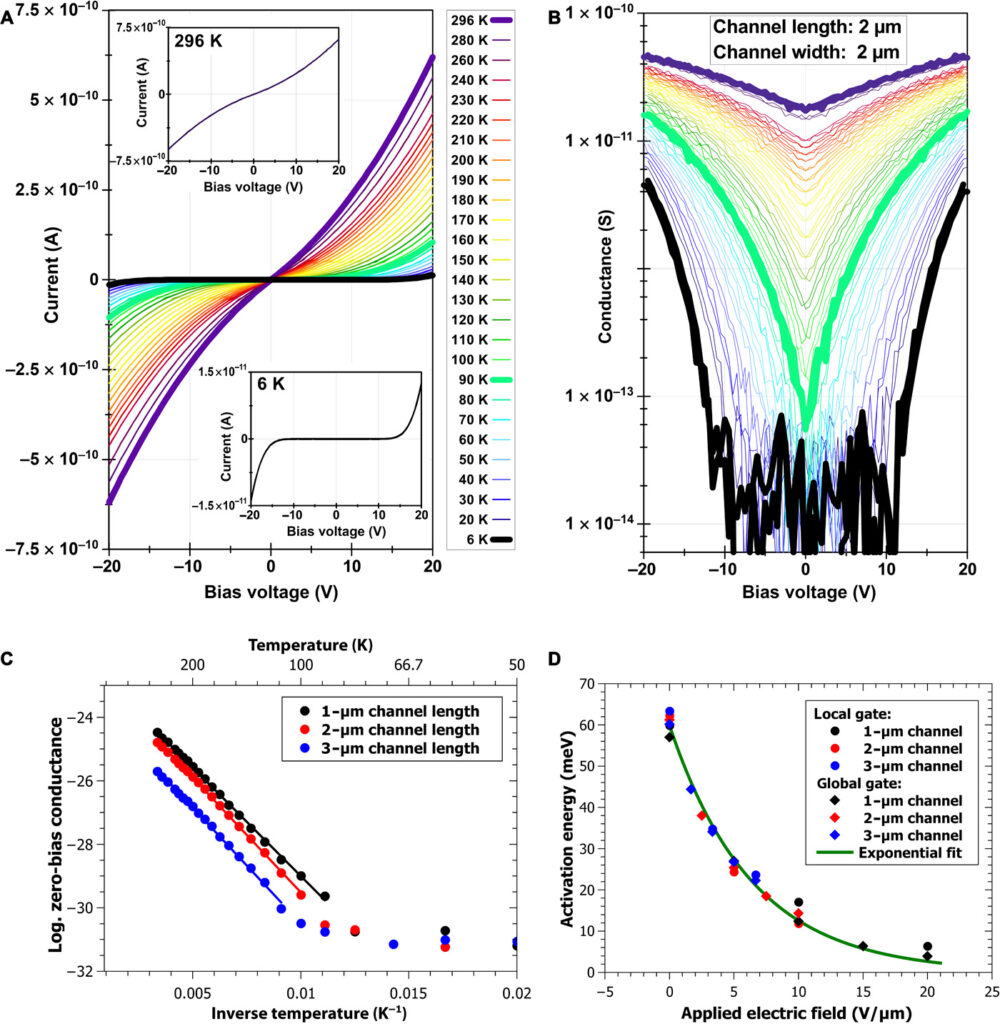
The single-electron transistors require further research and more development, but the work shows that there are alternatives to traditional transistor concepts that can be used in the future in various fields of application. Christian Klinke, the lead researcher, said in a statement,
The devices developed in our group can not only be used as transistors, but they are also very interesting as chemical sensors because the interstices between the nanoparticles, which act as so-called tunnel barriers, react highly sensitive to chemical deposits.
DNA Extruder – Fastest, Precision at Home Filament Extruder
Fastest consumer level extruder on the market. High quality & precision filament, thanks to a new & innovative approach to the process.
The 3D printing community is growing and innovating each day. Printers are becoming better and better, with higher print speeds, new features and capabilities. It is now time for the 3D printers’ counterpart, the filament extruder, to join the race.
Introducing the DNA Extruder, a never-before-seen combination of speed, precision, quality and aesthetics. An entirely new approach to the filament extrusion process.
DNA Extruder – Fastest, Precision at Home Filament Extruder – [Link]
Sculpto+: The world’s most user-friendly desktop 3D printer
Sculpto+ is a compact desktop 3D printer and app-based software that makes 3D printing more accessible than ever before.
3D printers are one of the coolest and most efficient ways for you to make your ideas go from the drawing board and into real life.
Two years ago we launched a new type of 3D printer on Kickstarter. We wanted to make the amazing world of 3D printing available to everyone – not just engineers and tech-savvy people. We believe everyone should be able to bring their ideas to life. We started delivering that dream a year ago and opened a world of 3D printing for regular people and schools all over Denmark. Since then we have refined our production and software while developing Sculpto+
Sculpto+: The world’s most user-friendly desktop 3D printer – [Link]
Signet – Open Source Password Manager
Signet is a compact, open hardware, and free and open source software USB device that safely stores your passwords, bookmarks, contacts, and other personal data in encrypted memory. It’s compatible with MacOS, Linux, Windows, and Android so you can use it on any device with a USB port. The device is smaller than the average house key, making it easy to take with you wherever you go. This makes Signet a practical alternative to storing sensitive data in the cloud. Unlike cloud-based or proprietary solutions, Signet is fully auditable with no proprietary software, firmware, or binary blobs to potentially hide security flaws.
Signet – Open Source Password Manager – [Link]
Arduino compatible high precision frequency counter
The concept of this board is to build an open, very versatile frequency counter, so it can be used to measure a wide variety of signals. It is designed to be customizable in every possible way.
Freq_LF_HF v1.0 board uses the famous AVR microcontroler Atmega328p-AU. This is not the newest ATMEL model but this chip is standard on Arduino UNO v3.0 board. It is a powerfull microcontroller and very small (TQFP- 32). This gives the opportunity for users to benefit from the Arduino community support and the many software libraries. The firmware uses a couple of the wonderfull functionnalities of this chip, namely the 16 bits timer, interrupts and comparator to an external precision voltage reference.
Arduino compatible high precision frequency counter – [Link]
Versatile And Open Source LiPo bBattery Breadboard Power Supply
Orlando Hoilett from Calvary Engineering LLC designed a versatile Li-Po battery breadboard power supply and wrote an Instructables on it. This power supply outputs 3.3V to the breadboard and takes input from a single-cell LiPo battery. The breadboard power supply also has the ability to charge the battery without needing to separate it from the circuit board. More importantly, this project is licensed under Open Source Hardware which means anyone can modify, distribute, make, and sell this design.

Key Components
The complete BOM is available at the GitHub repository.
- JST connector
This connector connects directly to the LiPo battery. - 3.3V regulator, AP2210K
3.3V logic is getting increasingly popular among electronics hobbyists and engineers. Also, boosting 3.7V of a LiPo battery to 5V can induce quite a bit of switching noise on the power supply. Linearly converting 3.7V to 3.3V is the best way to avoid this problem. - Battery Charger, MCP73831T
This power supply has a charger built into the board so you can charge the battery without removing it from the power supply. - Voltage Selection Jumper
The voltage selection headers are 3 pin male headers and they are labeled as 3.3V (or VReg) and VRAW (or LiPo). Connect the center pin to 3.3V to get power from the regulator. Connect the center pin to VRAW to get power directly from the LiPo battery. - DPDT Switch
This switch lets you power down the board without removing the battery. - LED indicators
LEDs are used to indicate the current status of the board.
Details
This board breaks out the LiPo battery to the breadboard power rails on both sides. It has a DPDT switch to power down the board. The AP2210K IC has an ENABLE pin which is pulled down to the ground using the DPDT switch in order to enter the low power mode. In low power mode, the regulator and all the LEDs get disabled and draws almost no current from the LiPo. More about the AP2210K regulator IC is on this datasheet.

Another great feature of this breadboard power supply as mentioned earlier is, it incorporates an MCP73831T LiPo battery charger IC. It is a widely used PMIC (power management integrated circuit) for charging LiPo batteries. The LiPo battery should be connected to pin 3 (VBAT) and 5V should be applied to pin 4 (VDD).
The chip starts charging as soon as it detects 5V input and stops charging when the battery is full. Charging current is limited to USB standard i.e. 100mA by connecting a 10.2K resistor between pin 5 (PROG) and ground. So, it’s completely safe to charge the battery from your laptops USB port. Other host microcontrollers can check the battery status using pin 1 (status pin) of MCP73831T.
Graphene Electronic Circuits with Atomic Precision
Essential electronic components, such as diodes and tunnel barriers, can be incorporated in single graphene wires (nanoribbons) with atomic precision. The result is a working electronic device that could be used in Graphene-based electronic switches with extremely fast operational speeds. Chemists at Utrecht University made this discovery together with their colleagues at TU Delft and the Aalto University in Finland.
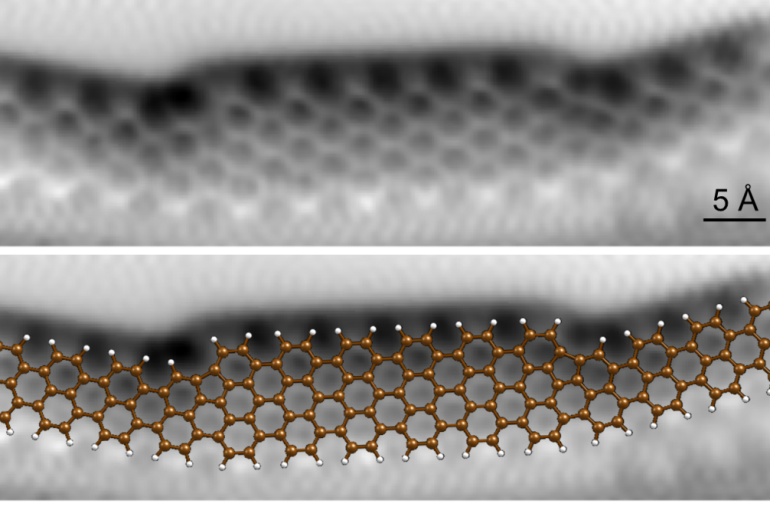
The ‘wonder material’ graphene has many interesting characteristics, and researchers around the world are hard at work looking for new ways to utilise them. Graphene itself does not have the characteristics to switch electrical currents on and off, however, so smart solutions must be found for that particular problem.
“The great thing about our solution is its atomic precision. By selecting certain precursor substances (molecules), we can code the structure of the electrical circuit with extreme accuracy”, explains research leader Ingmar Swart from Utrecht University.
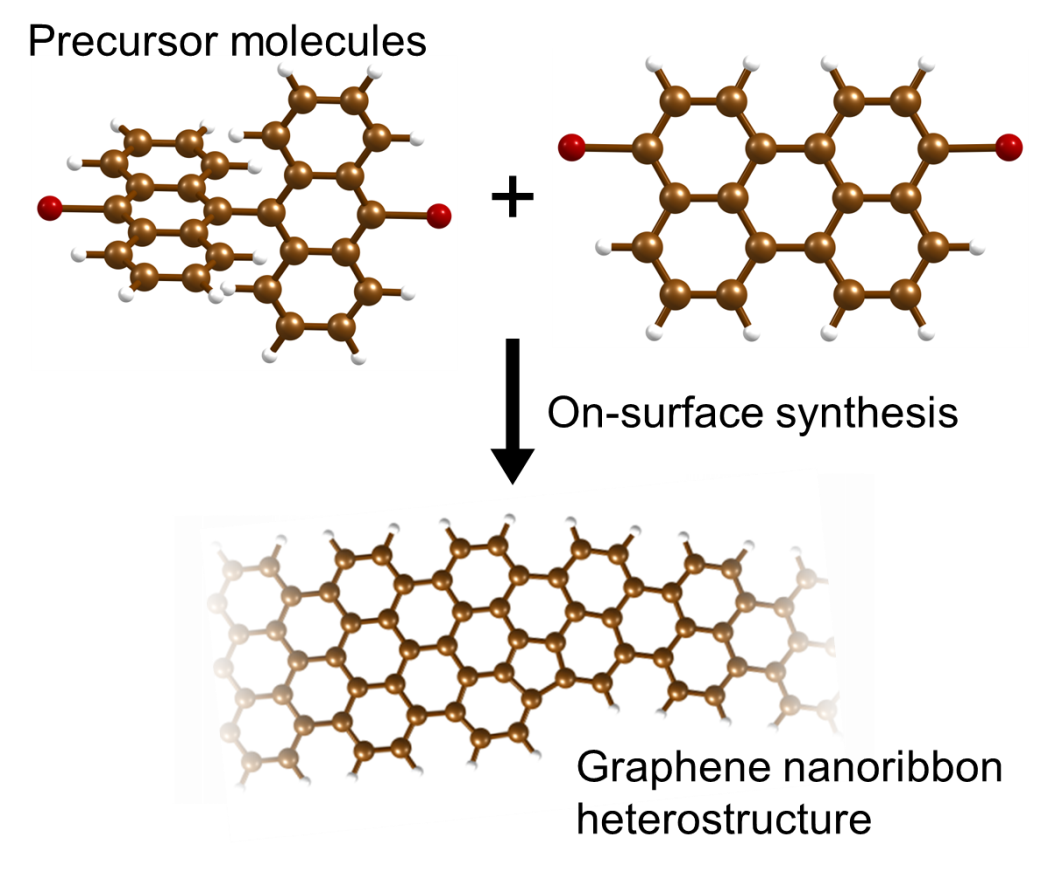
Seamless Integration
The switch structureded on the principle of graphene nanoribbons. Previous research has shown that the ribbon’s electronic characteristics are dependent on its atomic width. A ribbon that is five atoms wide is an ordinary electric wire with extremely good conduction characteristics, but adding two atoms makes the ribbon a semiconductor.
“We are now able to seamlessly integrate a five-atom wide ribbon together with one that is seven atoms wide. That gives you a metal-semiconductor junction, which works as a diode”, according to Swart.
The work is published in Nature Communications, you can check it out on this link.




